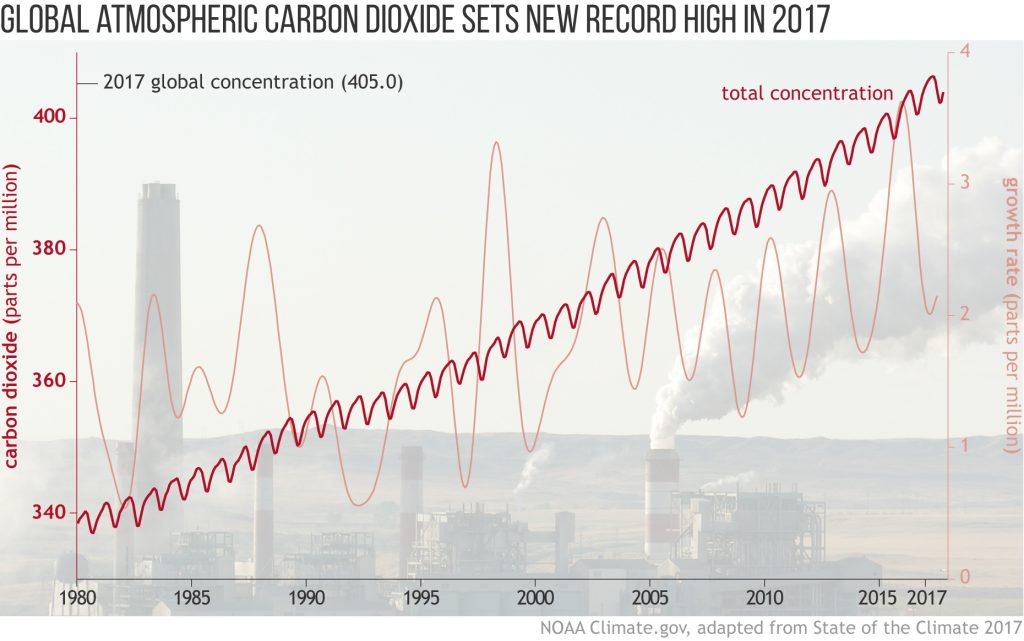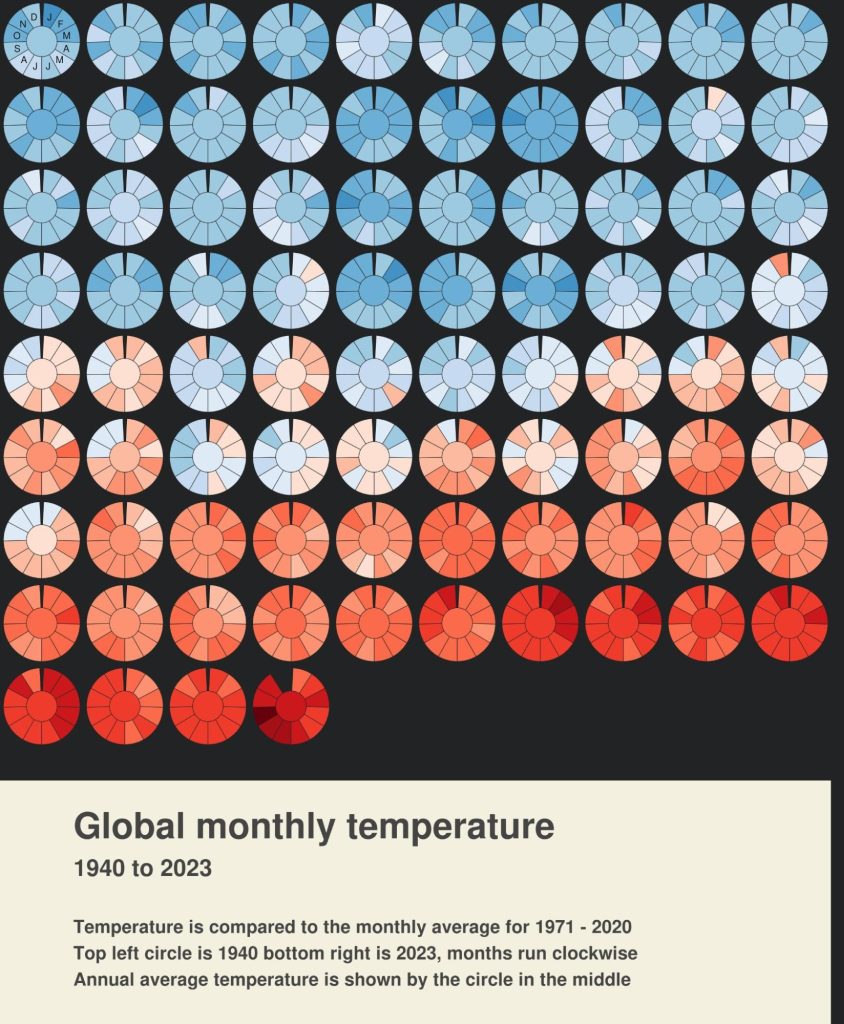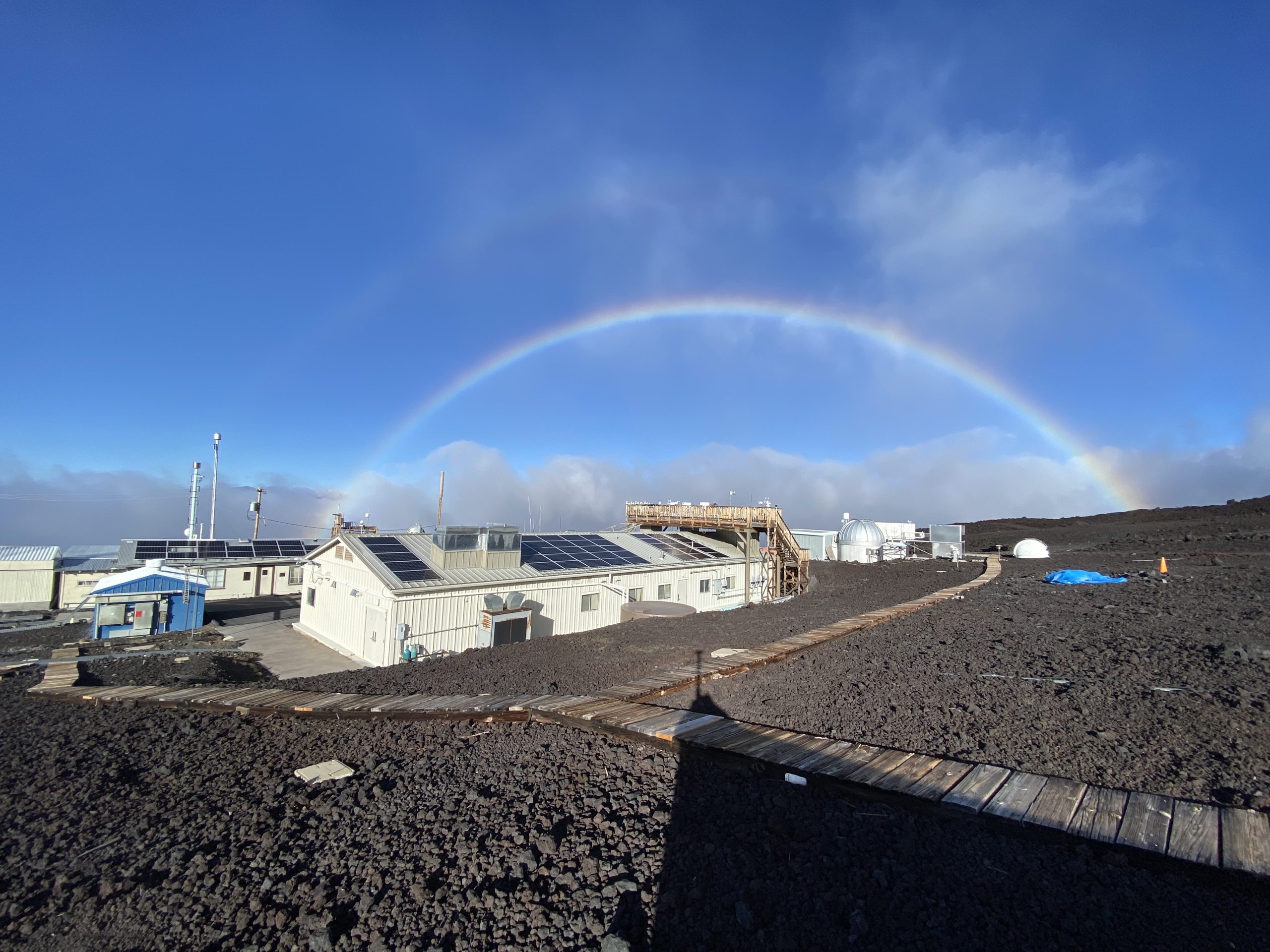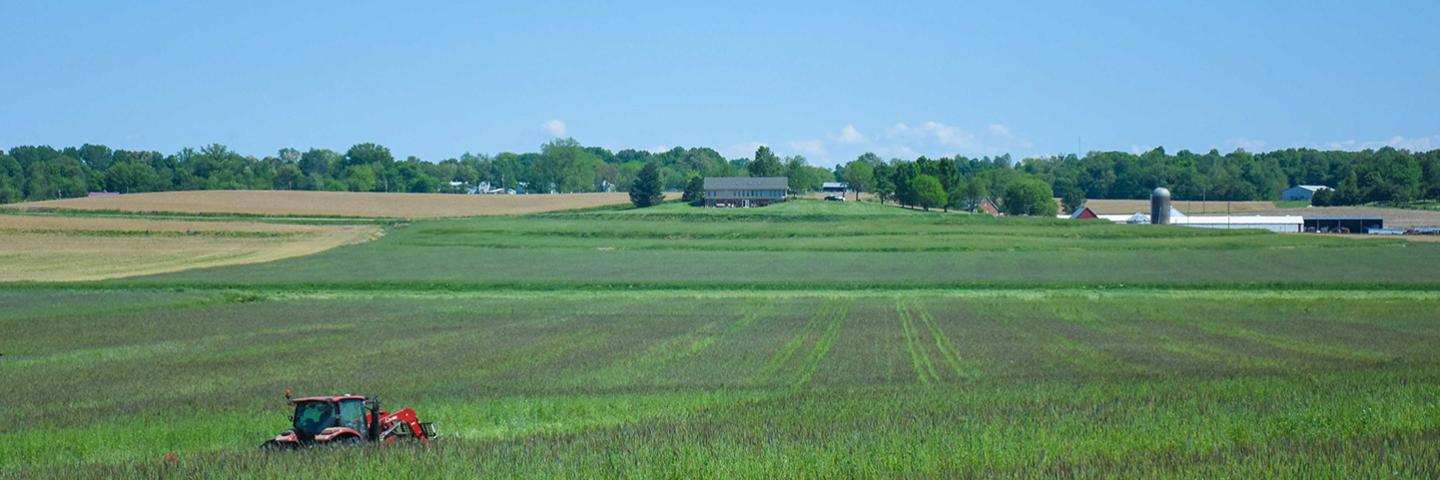Now that the 28th Conference of the Parties (COP 28) has come to a close, we wanted to highlight some of the things we’ve observed and learned about our climate since the last major climate agreement was signed in 2015. Known as the Paris Agreement, it was adopted by 196 countries including the United States at COP 25 in Paris. The agreement was notable in that it set out a goal to limit the temperature increase to 1.5°C ( 2.7 degrees Fahrenheit).
At NOAA Research, we have learned a lot about how our climate functions, while also still serving as one of the primary entities responsible for monitoring greenhouse gas concentrations in our atmosphere. Learn more below about some distinct things we have learned about our climate, how carbon dioxide (CO2) levels in our atmosphere continue to rise, and how the costs from climate-related extreme events are increasing significantly.
2017
In the two years following the Paris Agreement, the United States experienced 16 individual billion dollar weather and climate related events, totaling a then record of $300 billion. Scientists also became concerned about a crack in Antarctica’s fourth largest ice shelf known as Larsen C that grew by 17 miles in two months. This year would also thankfully see the end of the longest ever mass coral bleaching event. Starting in 2014, it would spell the deaths of 95% of coral in some affected areas. Carbon dioxide levels this year were 405 parts per million (ppm).

(Image credit: NOAA)
2018
This was the year we would learn that 2017 was one of the three warmest years on record. In 2018 the Intergovernmental Panel on Climate Change (IPCC) released its landmark report on the consequences of the planet warming more than 1.5°C ( 2.7°F) of pre industrial temperatures. As a result, 1.5°C would become the new benchmark for society’s success or failure in the face of climate change. We would also discover that in the year prior, heat in the upper ocean hit a record high, while capping this year off with 14 individual billion dollar weather and climate events. CO2 levels this year were 407 ppm.
2019
Venice, Italy experienced the worst flooding in 50 years, causing millions in damages. The US also experienced one of the wettest years on record with heavy rains and flooding. Also, record low rainfall in Australia contributed to catastrophic wildfires that caused the loss of five million hectares, alarming first responders and scientists. The US would experience 14 individual billion dollar weather and climate disasters. CO2 levels this year were 409 ppm.
2020
2020 was a rollercoaster of a year for many reasons, and does not appear to have slowed down. With the emergence of COVID-19, the world was forced to consider the connection between climate change, zoonotic diseases, and what this nexus means for the future. We would learn that 2019 was the second hottest year on record for the planet’s surface. Ocean temperatures in 2020 also experienced the largest single year increase. During this time, the US also experienced 22 individual billion dollar weather and climate disasters. CO2 levels this year were 412 ppm.
2021
This was the year that we would learn 2020’s greenhouse gas concentrations were the highest on record. Not only that, but despite the shutdowns caused by the COVID-19 pandemic, carbon dioxide level rose to 414 ppm. This number would have been greater however, without the economic slowdown, which is thought to have reduced carbon emissions by about seven percent. This is also the year that we would learn that airborne matter from the burning of fossil fuels causes 8.7 million premature deaths annually, and the US would experience 20 individual billion dollar weather and climate disasters.


(Image credit: Neil Kaye & the UK Met Office)
2022
In 2022, scientists found that global carbon dioxide concentrations were 50% higher than pre industrial times at 417 ppm, and that marine heatwaves in the Mediterranean between 2015-2019 caused multiple mass mortality events. A study found that the megadrought afflicting the southwestern United States since 2000 was the driest 22 year period in 1200 years. The US also experienced 18 individual billion dollar weather and climate disasters.
2023
This year, 2023, was the hottest year on record by far. Researchers found that on our current track, there is a 50% chance that temperatures will regularly exceed 1.5°C above pre-industrial levels within seven years. Another study suggested that the ocean may be absorbing less CO2, potentially leading to more of it in the atmosphere. There have been 28 individual billion dollar weather and climate disasters in the U.S. in 2023, which is a new record.
In total, the carbon dioxide levels rose steadily by about 12 ppm, possibly more once the data from 2023 are available. Since 2017, there have been 132 individual billion dollar weather and climate disasters, the total costs of which exceed one trillion dollars, with 2,348 lives lost. If you’re interested in going even further back in the sciences over 160 years of history, you can find it here.



